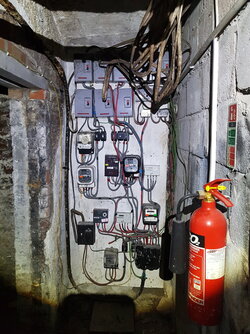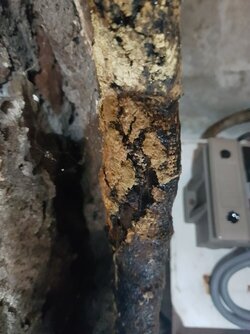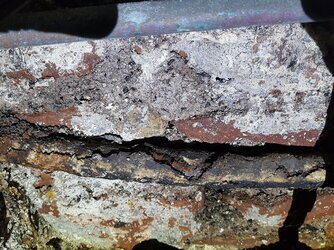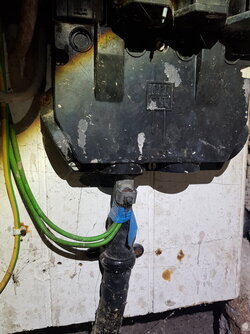- Dec 18, 2011
- 5,378
- 6,731
- 405,788
- If you're a qualified, trainee, or retired electrician - Which country is it that your work will be / is / was aimed at?
- United Kingdom
- What type of forum member are you?
- Practising Electrician (Qualified - Domestic or Commercial etc)
This is a follow on from my thread regarding the megger code that I did not understand What is this megger code? - https://www.electriciansforums.net/threads/what-is-this-megger-code.189699/
I conducted an EICR on a top floor flat but did not have access to the room which stored the meters and cutouts.
Previously my megger was not letting me obtain a Zs at the consumer unit and was saying 261V Ut >50v.
I have today gained access to the meter room and discovered there was no continuity between the earth in the switch fuse, and the Main Earthing Terminal for all the flats. This has been remedied with a 16mm earth. However, the meter room looks awful....
It looked like an earth went from top flat switch fuse to off peak switch fuse and then into another flats switch fuse and so on, but did not get back to the MET. Is it normal for the Main earth to meander between different flats switch fuses before a single cable goes from the last switch fuse to the MET? Should they not have a separate cable for each flat?
Also, the supply cable looks dire (see pictures), but I have not studied a new piece of this cable so am unsure what it should look like and whether the state it is in is dangerous?
Lastly, the TNS seems to have a bonding clamp rather than the usual joint I see on a TNS, this is not a proper TNS joint so would you be contacting the DNO for this?




Cheers all
I conducted an EICR on a top floor flat but did not have access to the room which stored the meters and cutouts.
Previously my megger was not letting me obtain a Zs at the consumer unit and was saying 261V Ut >50v.
I have today gained access to the meter room and discovered there was no continuity between the earth in the switch fuse, and the Main Earthing Terminal for all the flats. This has been remedied with a 16mm earth. However, the meter room looks awful....
It looked like an earth went from top flat switch fuse to off peak switch fuse and then into another flats switch fuse and so on, but did not get back to the MET. Is it normal for the Main earth to meander between different flats switch fuses before a single cable goes from the last switch fuse to the MET? Should they not have a separate cable for each flat?
Also, the supply cable looks dire (see pictures), but I have not studied a new piece of this cable so am unsure what it should look like and whether the state it is in is dangerous?
Lastly, the TNS seems to have a bonding clamp rather than the usual joint I see on a TNS, this is not a proper TNS joint so would you be contacting the DNO for this?




Cheers all









